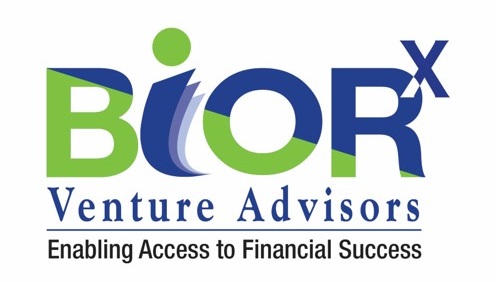By user
COMPREHENSIVE FRAMEWORK FOR EVALUATING BUSINESS PERFORMANCE AND POTENTIAL
In today’s dynamic business landscape, evaluating a company’s performance and potential is crucial for investors, stakeholders, and management alike. This article presents a comprehensive framework for assessing businesses across five key dimensions: Execution Strategy, Competitive Advantage, Management Depth, Sales and Marketing Strategy, and Financial Viability. By examining these critical areas, we can gain a holistic understanding of a company’s strengths, weaknesses, and future prospects.
EXECUTION STRATEGY: CHARTING THE PATH TO SUCCESS
The execution strategy of a company forms the backbone of its operations and future direction. This category encompasses several vital components that contribute to a company’s ability to achieve its objectives and navigate challenges effectively.
1. Goal Orientation
A company’s success often hinges on its ability to set clear, achievable goals and align its resources towards meeting them. Evaluators should assess whether the organization has well-defined short-term and long-term objectives that are SMART (Specific, Measurable, Achievable, Relevant, and Timebound). Additionally, it’s crucial to examine how these goals cascade throughout the organization, ensuring that every department and individual understands their role in achieving the company’s vision.
2. Degree of Detailing
The level of detail in a company’s plans and strategies can be a strong indicator of its preparedness and thoroughness. A well-thought-out strategy should include comprehensive action plans, resource allocation, timelines, and key performance indicators (KPIs). Evaluators should look for evidence of meticulous planning and a clear roadmap for achieving stated objectives.
3. Contingency Planning
In an unpredictable business environment, the ability to adapt and respond to unforeseen circumstances is paramount. Effective contingency planning involves identifying potential risks and developing strategies to mitigate them. Evaluators should assess how the company plans for both longterm and short-term goals, as well as its ability to pivot and adjust strategies when faced with unexpected challenges or opportunities.
4. Social Impact and Ethical Conduct
In today’s socially conscious world, a company’s ethical stance and social impact are increasingly important. Evaluators should examine the organization’s commitment to ethical business practices, corporate social responsibility initiatives, and overall impact on society. This includes assessing the company’s environmental policies, labour practices, community engagement, and alignment with broader social goals.
COMPETITIVE ADVANTAGE: STANDING OUT IN THE MARKETPLACE
A company’s competitive advantage is what sets it apart from its rivals and enables it to capture market share and maintain profitability. This category focuses on understanding how the company positions itself in relation to its competitors and leverages its unique strengths.
1. Comparative Positioning and Value Proposition
Evaluators should analyse how the company differentiates itself from competitors. This involves examining its unique selling points, target market segments, and overall value proposition. A strong competitive position is often built on factors such as product innovation, superior customer service, cost leadership, or niche market focus.
2. Comparative SWOT Analysis
A comprehensive evaluation should include a SWOT (Strengths, Weaknesses, Opportunities, Threats) analysis that compares the company to its key competitors. This analysis helps identify areas where the company excels, where it needs improvement, and potential market opportunities or threats that could impact its future performance.
3. Gap Bridging Strategy
Based on the comparative analysis, evaluators should assess the company’s plans for addressing any identified gaps or weaknesses. This includes strategies for enhancing existing strengths, mitigating weaknesses, capitalizing on opportunities, and defending against threats. A well-crafted gap bridging strategy demonstrates the company’s awareness of its market position and commitment to continuous improvement.
MANAGEMENT DEPTH: THE POWER OF LEADERSHIP
The quality and experience of a company’s management team are critical factors in its success. This category focuses on evaluating the leadership’s ability to guide the organization through its next phase of growth and navigate complex business challenges.
1. Team Experience and Skill Set
Evaluators should assess the collective experience and expertise of the management team. This includes examining their track records in relevant industries, functional expertise, and ability to lead organizations of similar size and complexity. A diverse skill set that covers key areas such as finance, operations, marketing, and technology is often indicative of a well-rounded leadership team.
2. Team Dynamics and Cohesion
Beyond individual qualifications, the ability of team members to work together effectively is crucial. Evaluators should look for evidence of strong communication, collaborative decision-making, and a shared vision among the leadership team. Factors such as team stability, complementary strengths, and a history of successful collaboration can provide insights into the team’s effectiveness.
SALES AND MARKETING STRATEGY: CONNECTING WITH CUSTOMERS
A company’s approach to sales and marketing plays a pivotal role in its ability to attract and retain customers, drive revenue growth, and build brand equity. This category examines various aspects of the company’s go-to-market strategy and customer engagement approach.
1. Market Timing and Product Placement
The success of a product or service often depends on its timing and positioning in the market. Evaluators should assess the company’s understanding of market trends, customer needs, and competitive landscape. This includes examining the rationale behind product launch timelines and how well the company’s offerings align with current and projected market demands.
2. Market Understanding and Segmentation
A deep understanding of the target market is essential for effective marketing and sales strategies. Evaluators should examine how well the company has segmented its market, identified key customer personas, and tailored its offerings to meet specific needs. This includes assessing the company’s market research methodologies, customer feedback mechanisms, and ability to adapt to changing market dynamics.
3. Customer Pursuit and Retention Strategies
Acquiring and retaining customers is critical for sustainable growth. Evaluators should analyse the company’s strategies for attracting new customers, including lead generation techniques, sales funnels, and conversion optimization. Equally important is the assessment of customer retention strategies, such as loyalty programs, after-sales support, and ongoing engagement initiatives.
4. Pricing Model and Differentiators
The pricing strategy can significantly impact a company’s market position and profitability. Evaluators should examine the rationale behind the company’s pricing model, including any unique differentiators or value-added services that justify premium pricing. This also involves assessing the company’s pricing flexibility and ability to adapt to market pressures or competitive threats.
5. Company Presence and Marketing Channels
A company’s visibility and accessibility to its target market are crucial factors in its success. Evaluators should assess the company’s physical presence (e.g., office locations, retail outlets) as well as its digital footprint. This includes examining the effectiveness of the company’s website, social media presence, and various marketing channels used to reach and engage customers.
FINANCIAL VIABILITY: ENSURING SUSTAINABLE GROWTH
The financial health and growth potential of a company are fundamental to its long-term success. This category focuses on assessing various financial aspects that indicate the company’s current performance and future prospects.
1. Scalability
The ability to scale operations efficiently is critical for long-term growth. Evaluators should assess the company’s potential to increase revenue and market share without a proportional increase in costs. This includes examining the scalability of the business model, operational infrastructure, and technology platforms.
2. Clientele and Pipeline
A strong and diverse client base is indicative of market acceptance and future growth potential. Evaluators should examine the company’s current client portfolio, including the mix of long-term vs. new clients, client retention rates, and the strength of the sales pipeline. The potential for expanding into new market segments or geographies should also be considered.
3. Industry Acceptance and Recognition
External validation can provide valuable insights into a company’s standing within its industry. Evaluators should look for evidence of industry recognition, such as certifications, awards, and strategic partnerships. These accolades can indicate the company’s commitment to quality, innovation, and industry best practices.
4. Financial Risks
A thorough evaluation should include an assessment of potential financial risks facing the company. This may include factors such as market volatility, regulatory changes, dependence on key customers or suppliers, and exposure to currency fluctuations. Evaluators should also examine the company’s risk management strategies and financial contingency plans.
5. Sales Performance and Projections
Current sales performance and future projections are key indicators of a company’s financial health and growth potential. Evaluators should analyse historical sales data, growth trends, and the realism of future sales projections. This assessment should take into account market conditions, competitive pressures, and the company’s ability to execute its sales strategy effectively.
CONCLUSION
The comprehensive evaluation framework presented in this article provides a structured approach to assessing a company’s performance and potential across five critical dimensions. By examining Execution Strategy, Competitive Advantage, Management Depth, Sales and Marketing Strategy, and Financial Viability, stakeholders can gain a holistic view of a company’s strengths, weaknesses, and future prospects. This framework serves as a valuable tool for investors, board members, and management teams to identify areas of excellence and opportunities for improvement. By regularly applying this evaluation methodology, companies can enhance their strategic decision-making, optimize resource allocation, and ultimately increase their chances of long-term success in today’s competitive business landscape.


